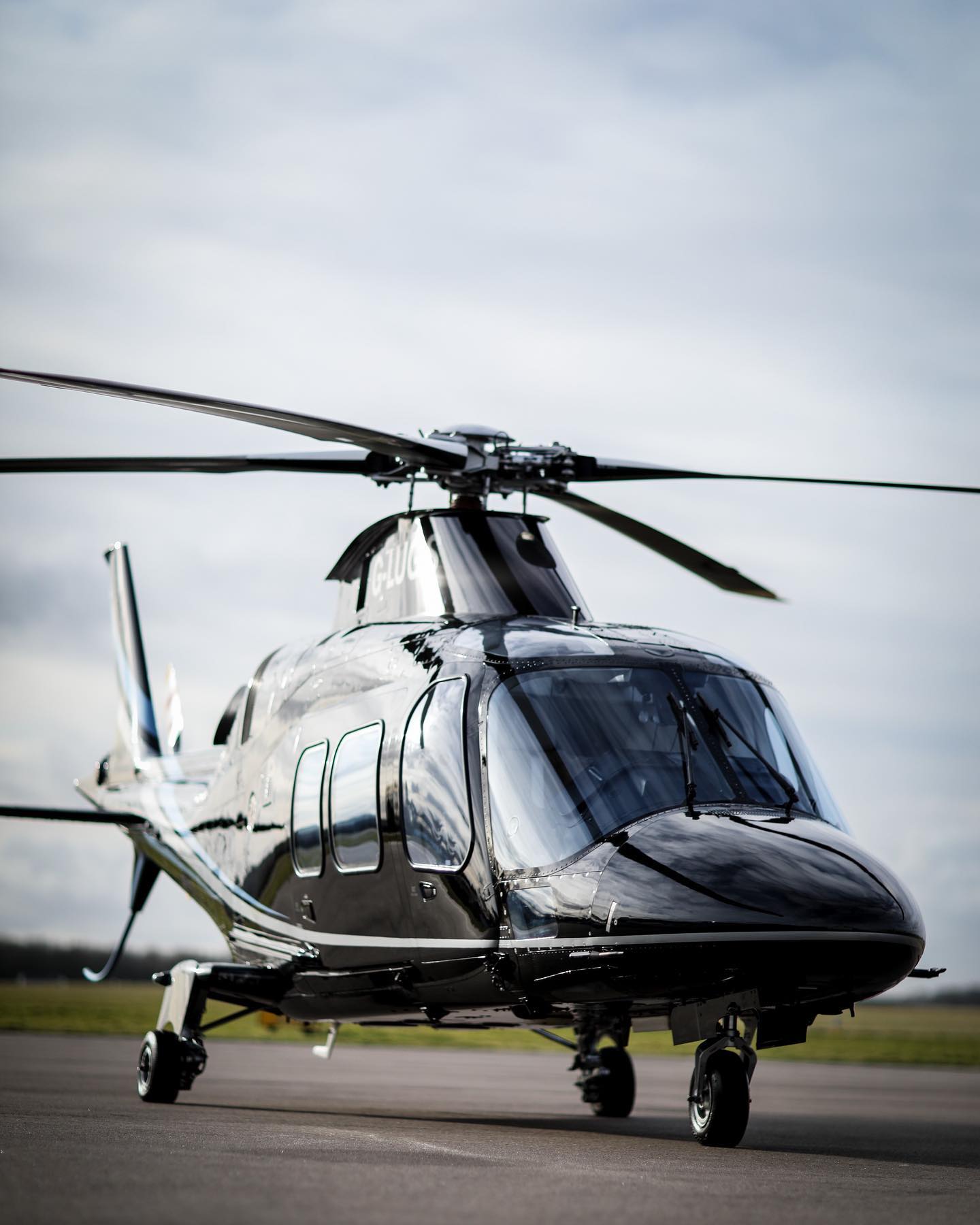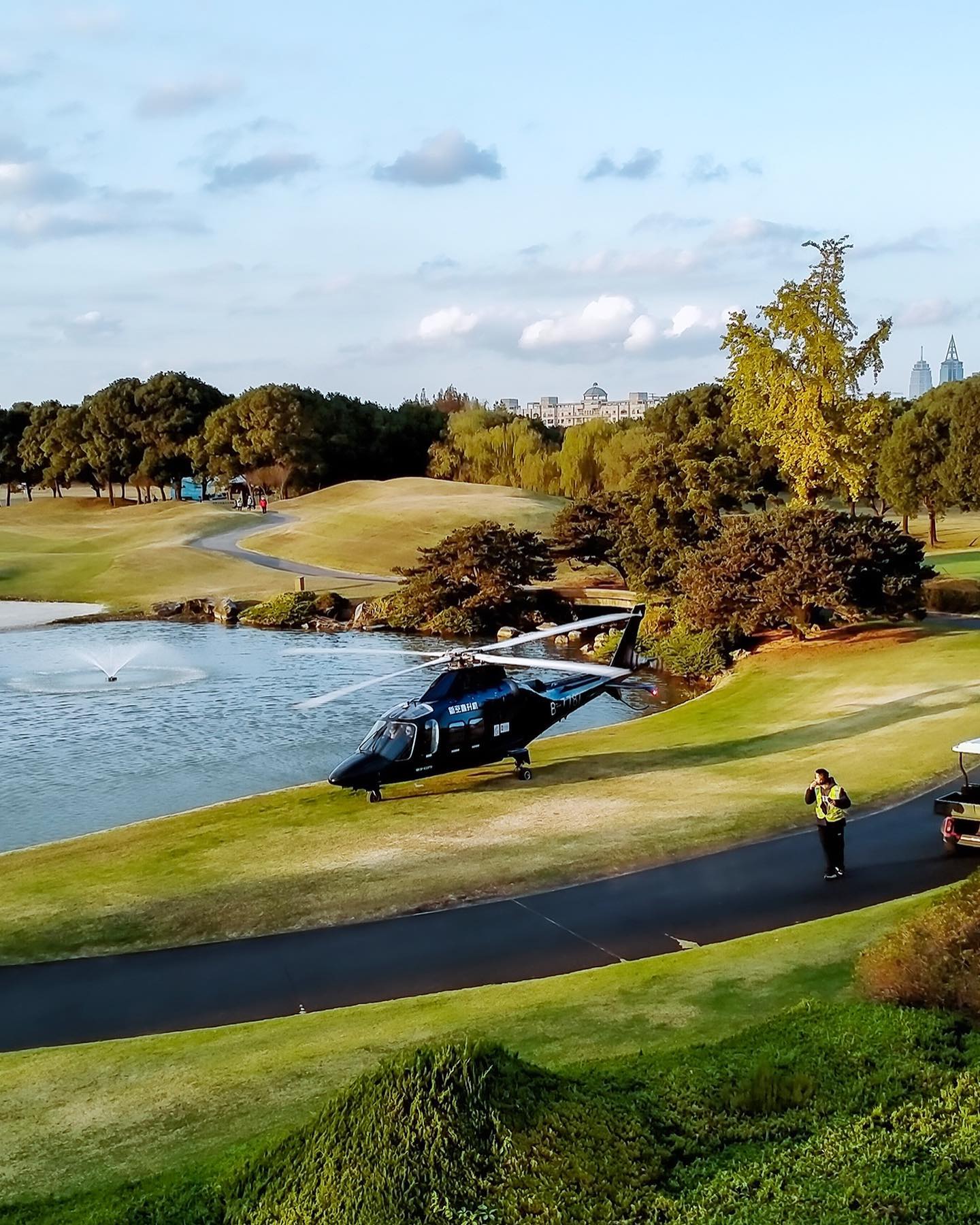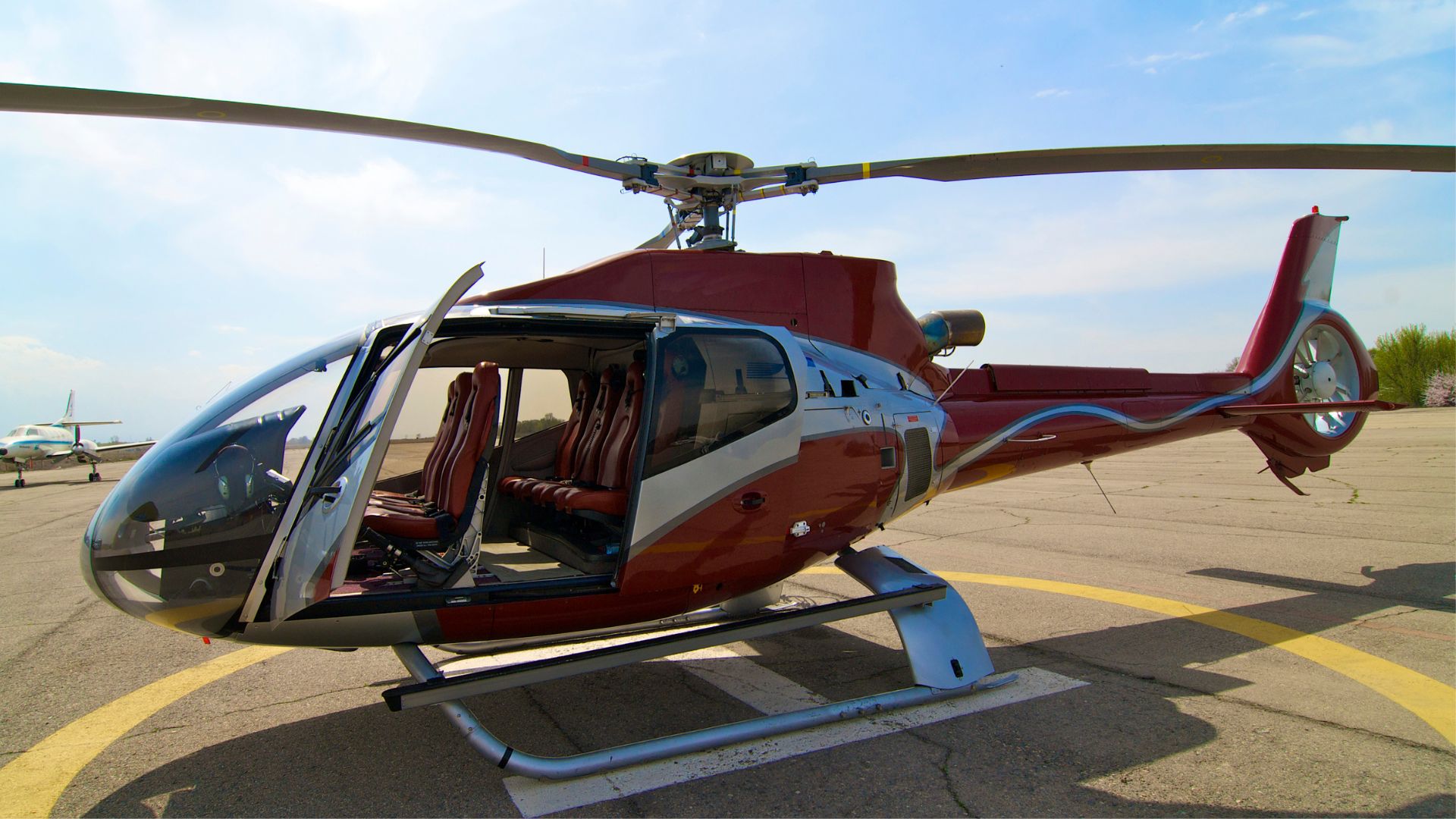Helicopters are versatile aircraft that can operate in places where other aircraft cannot. The distance a helicopter can fly without refueling, known as its range, varies widely depending on several factors. In this article, we explore everything about the flight range of helicopters.
1. Factors that Influence Helicopter Flight Range
The distance a helicopter can fly without refueling varies widely depending on these factors:
- Helicopter Model and Design: Different models of helicopters have different capabilities. Light helicopters like the Robinson R22 have a shorter range than larger, more powerful models like the Sikorsky UH-60 Black Hawk or the CH-47 Chinook. The design elements such as rotor efficiency, aerodynamics, and weight also play a crucial role in determining the range.
- Engine Power and Efficiency: The engine’s power and fuel efficiency directly affects how far a helicopter can fly. More powerful engines can provide greater range, but they may also consume fuel more quickly.
- Fuel Capacity: The amount of fuel a helicopter can carry is a crucial factor. Larger helicopters with bigger fuel tanks can generally fly farther. However, having more fuel also increases the aircraft’s weight, which can impact performance and efficiency.
- Weight and Payload: The weight of the helicopter, including its payload (passengers, cargo, etc.), affects its range. A heavier helicopter will consume more fuel, reducing its potential distance.
- Weather Conditions and Wind: Favorable weather conditions and tailwinds can increase a helicopter’s range, while headwinds and adverse weather can significantly reduce it.
- Flight Profile: The helicopter’s speed and altitude during the flight can impact its range. Flying at optimal speeds and altitudes can maximize fuel efficiency and range.
- Reserve Fuel Requirements: Regulations often require helicopters to carry a certain amount of reserve fuel, which can limit the usable fuel for a long-distance flight.
To give a rough idea, a light utility helicopter like the Bell 206 JetRanger can fly for about 300-400 miles on a full fuel tank, while larger helicopters like the Sikorsky S-92 can have a range of over 600 miles. Military helicopters, often designed for long-range missions, can have even greater ranges, especially when equipped with auxiliary fuel tanks or in-flight refueling capabilities.
It’s also important to note that helicopters, unlike airplanes, often operate at lower altitudes and speeds, which can influence their fuel consumption and range. Additionally, the need for vertical takeoffs and landings means that they cannot glide in the same way airplanes can to conserve fuel.
2. Helicopter Types and Their Flight Ranges

Photo credit: instagram.com
In the diverse world of rotorcraft aviation, helicopters come in various types and sizes, each designed to fulfill specific roles and operational needs. One critical aspect differentiating these helicopters is their flight range, the maximum distance they can travel without refueling. Understanding the flight ranges of different helicopter types, from single-engine to multi-engine models, is essential for both pilots and operators in planning missions and operations.
Typical Flight Ranges for Popular Single-Engine Models
Robinson R22: A popular training helicopter, the R22 has a range of about 250-280 miles.
Bell 206 JetRanger: A light utility helicopter widely used in various roles, the JetRanger offers a range of around 300-400 miles.
Eurocopter AS350 Écureuil (AStar): This versatile helicopter is used for everything from law enforcement to sightseeing and offers a range of approximately 350-400 miles.
Factors Influencing Their Range Capabilities:
- Fuel Efficiency and Capacity: The smaller size of single-engine helicopters limits their fuel capacity, directly impacting their range.
- Weight and Payload: These helicopters are more sensitive to weight changes. Additional payload can significantly reduce their range.
- Aerodynamics and Design: The design efficiency, including rotor design and aerodynamics, plays a crucial role in their fuel consumption and range.
- Operational Environment: Flight conditions like altitude, temperature, and wind have a pronounced effect on the range of these lighter helicopters.
Multi-Engine Helicopters
Multi-engine helicopters generally have a more extended range than single-engine models due to larger fuel capacity and more powerful engines. For example, the Sikorsky S-76 can cover about 400-500 miles, whereas the Airbus H155 can reach up to 500-600 miles, both significantly more than most single-engine helicopters.
Advantages and Limitations of Multi-Engine Helicopters
Advantages:
- Increased Range and Power: Multi-engine helicopters can carry more fuel and generate more power, extending their operational range.
- Enhanced Safety: With multiple engines, these helicopters can continue flying even if one engine fails, making them safer, especially for over-water or remote area operations.
- Greater Payload Capacity: They can carry more passengers or cargo, making them suitable for a wider range of applications.
Limitations:
- Higher Operational Costs: More engines mean higher fuel consumption and maintenance costs.
- Complexity: They are more complex to operate and maintain, requiring more skilled pilots and technicians.
- Weight and Size: The larger size and weight can be a disadvantage in specific environments where space is limited or in urban areas.
In summary, while single-engine helicopters offer simplicity and cost-effectiveness, multi-engine helicopters provide enhanced safety, range, and payload capabilities. The choice between the two depends on the specific requirements of the mission or operation.
3. Longest Recorded Helicopter Flights
The history of helicopter aviation is marked by remarkable feats of endurance and distance, with several record-breaking flights demonstrating the extraordinary capabilities of these versatile aircraft. These longest-recorded helicopter flights showcase the technological advancements in rotorcraft design and highlight the skill and determination of the pilots and crews involved. From circumnavigating the globe to crossing vast oceans, these historic flights have pushed the boundaries of what was previously thought possible in helicopter aviation.
Historical Achievements in Helicopter Flight Range
Examples of Long-Distance Record Flights:
- Westland Lynx 1986 Record: In 1986, a specially modified Westland Lynx set a world record for the longest helicopter flight without landing, covering a distance of 3,561 miles (5,732 kilometers) from Canada to the UK.
- Bell 407 Global Odyssey 1996: In 1996, a Bell 407, known as the “Global Odyssey,” completed a 19,000-mile (30,577 kilometers) journey around the world, demonstrating the long-range capabilities of modern helicopters.
Notable Advancements in Technology and Fuel Efficiency:
- Improved Rotor and Engine Designs: Advancements in rotor blade and engine efficiency have significantly increased the range and fuel efficiency of helicopters.
- Use of Composite Materials: The introduction of lightweight composite materials in helicopter construction has reduced overall weight, contributing to longer flight ranges.
- Sophisticated Navigation and Flight Systems: The development of advanced avionics and GPS systems has allowed for more efficient flight paths and better fuel management.
Factors that Contributed to the Success of These Long-Distance Flights
Planning and Preparation:
- Route Optimization: Detailed flight path planning to take advantage of favorable winds and avoid adverse weather conditions.
- Fuel Management: Careful calculation and management of fuel consumption rates were essential for these long flights.
- Crew Training: Pilots and crew underwent extensive training to prepare for the unique challenges of long-distance helicopter flight.
Modifications and Adaptations Made to the Helicopters:
- Increased Fuel Capacity: Additional fuel tanks were installed in some cases, either internally or externally, to extend the range.
- Weight Reduction Measures: Non-essential equipment was often removed to save weight and make room for extra fuel.
- Engine and Airframe Modifications: Some record-setting flights involved modified engines for improved fuel efficiency and airframes adapted for long-duration flights.
These historic long-distance flights demonstrate not only the technological advancements in helicopter design and engineering but also the incredible skill and dedication of the pilots and crews who undertook these challenging journeys. Their successes have pushed the boundaries of what is possible in rotary-wing aviation and paved the way for future innovations.
4. Practical Considerations for Maximizing Helicopter Flight Range

Photo credit: instagram.com
Maximizing the flight range of a helicopter is a critical aspect of rotorcraft operation, requiring a blend of technical know-how and practical strategies. This is especially important for missions where extended range can mean the difference between success and failure. In this section, we delve into the practical considerations that pilots and operators must account for to extend the operational reach of their helicopters.
From advanced fuel management techniques to weight reduction strategies, we explore the various methods and best practices employed to optimize helicopter flight ranges. This insight is crucial not only for planning long-distance flights but also for ensuring efficiency and safety in all helicopter operations.
Fuel Management and Consumption Optimization Techniques
Fuel management and consumption optimization are pivotal in maximizing a helicopter’s flight range. Modern helicopters are equipped with advanced fuel monitoring systems that provide pilots with real-time data on fuel consumption. This technology allows for the adjustment of flying styles to achieve optimal efficiency. Regular maintenance of the fuel system is equally important, as it ensures the system’s top condition and helps identify potential issues like leaks or blockages that could impair fuel efficiency.
Additionally, pilot training plays a crucial role in this aspect. Pilots are trained explicitly in fuel efficiency techniques, such as managing optimal rotor RPM and maintaining efficient cruising speeds, to minimize fuel burn. This comprehensive approach to fuel management is essential in enhancing the overall performance and range of the helicopter.
Flight planning and route optimization further contribute to efficient fuel consumption. Pilots extensively use flight planning software, which aids in charting the most efficient routes. This software considers various factors, including wind direction, weather conditions, and terrain, to plot a course that maximizes fuel efficiency. Coordinating with air traffic control is also a key factor in this process, as it helps minimize flight delays and avoid congested airspace, both of which can lead to unnecessary fuel expenditure.
Another critical aspect is altitude optimization. Pilots aim to fly at altitudes where the helicopter operates most efficiently, balancing air density and engine performance. This altitude optimization is a strategic method to reduce fuel consumption, further extending the helicopter’s flight range.
Weight Reduction Strategies for Extended Flight Range
Weight reduction is a key strategy for extending helicopters’ flight range. One of the most effective ways to achieve this is through payload optimization. Careful consideration of the helicopter’s payload, ensuring that only necessary personnel and equipment are on board, can significantly decrease its weight, enhancing its range.
Another critical factor is the balancing of the load. Proper load distribution is vital for maintaining efficient flight dynamics. An unbalanced load affects the helicopter’s performance and leads to increased fuel consumption, as more power is needed to compensate for the imbalance. These measures ensure that the helicopter carries only what is essential, optimizing its weight for a longer flight range.
In addition to payload management, the efficient use of onboard equipment and supplies plays a crucial role in weight reduction. Utilizing lightweight equipment and materials, wherever feasible, can contribute to a significant reduction in the overall weight of the helicopter. This approach extends to the management of supplies carried on longer flights. Carrying only the necessary supplies and opting for lightweight containers for items like water and food helps keep the weight down.
Furthermore, on long flights, the fuel becomes a significant part of the payload. In such cases, carefully calculating the optimal amount of energy is essential. This involves striking a balance between carrying enough power for the journey and the weight implications it brings. By meticulously managing both the payload and onboard resources, helicopters can achieve greater efficiency and extended flight ranges.
In conclusion, maximizing a helicopter’s flight range involves carefully considering fuel management, efficient flight planning, and weight reduction strategies. Each aspect plays a critical role in extending the distance a helicopter can cover, making these practices essential for pilots and operators who aim to achieve long-range flights in various operational scenarios.

